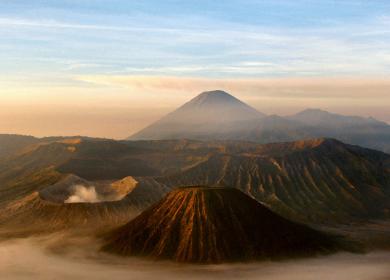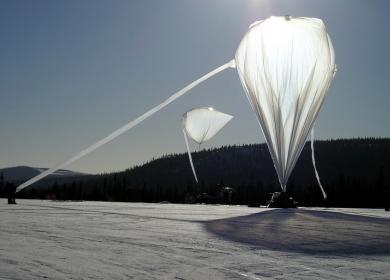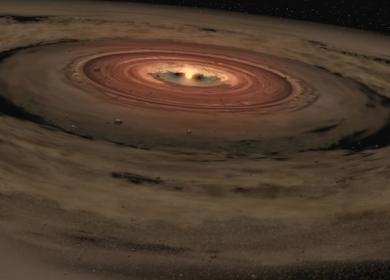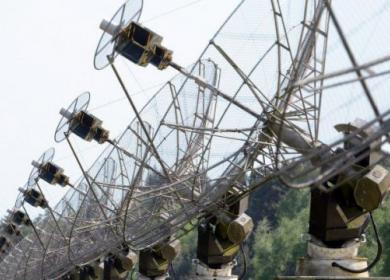Enhancing and supporting themes of excellence while promoting new scientific synergies that could develop around the Federating Research Themes.
- Emissions & Magmas
Hosts : Tjarda Robert (LPC2E), Bruno Scaillet (ISTO)
This new federating research theme fathers the ISTO's research on magmas and the LPC2E's research on the atmosphere, on the peculiar object that are volcanoes and their gaseous emanations. The point is to better understand (1) the link between emissions and volcanic conditions, and (2) between volcanic emissions and their atmospheric impacts (chemistry – climate) on different time and space scales.
- Greenhouse gas emissions in wetlands and cultivated areas
Hosts : Catherine Henault (INRA), Fatima Laggoun-Défarge (ISTO)
The two focuses "cultivated areas" and "peat-lands" will be jointly studied with the common target of studying greenhouse gas emissions (GHG). Those emissions at the interfaces between the soil and atmosphere compartments are a major issue within the context of climate change, whether it is in terms of direct GHG emission source (N2O, CH4, CO2) or from the perspective of the feedback effect of climate change on GHG flows through indirect impacts (hydrology, dynamics of organic matter, spatial variability of vegetation).
The studies aim to:
quantify GHG emissions and carbon release by surface environments (peat-lands: main GHG CH4, CO2; agrosystems: main GHG N2O)
study the mechanisms behind those emissions, as well as their determinism by biotic and abiotic factors
develop tools to simulate GHG emissions by surface environments
define mitigation strategies for those emissions.
- Air pollution
Hosts : V. Daele (ICARE), V. Catoire (LPC2E)
Understanding the chemical mechanisms associated with air pollution is a critical issue for air quality monitoring, with direct short-term implications for public health. The work programme places a particular focus on understanding and measuring chemical kinetics associated with OH radicals. Three areas of research have been identified as priorities:
the role of Criegee intermediates in the formation of secondary organic aerosols
the degradation mechanisms of VOCs involving OH and NO3 radicals
the analysis of the radical photochemistry of Mediterranean coastal locations.
- Aerosols & Dust
Hosts : Gwenaël Berthet (LPC2E), W. Mellouki (ICARE)
Particles suspended in the atmosphere play a major role in many processes affecting the Earth's energy budget and chemical equilibrium. A better understanding of the composition and physical properties (e.g. their size distribution) of the aerosols in the different atmospheric layers remains a key scientific issue. It is essential in order to better quantify radiative and chemical processes, as well as to better identify aerosols' environmental and health impacts. At the OSUC, studying the formation processes of those aerosols, their physical properties, and their impacts by using experimental and digital methods is part of a well-established culture, especially in the teams of the LPC2E and the ICARE.
- Solar system & astrobiology
Hosts: Frances Westall (CBM), Christelle Briois (LPC2E)
This theme unites 4 entities (CBM, ISTO, LPC2E, BRGM) around 4 main scientific issues :
The development of conditions conducive to life in the Solar System
The Origins of Life: origins and future of the basic components of life
The identification and characterisation of the oldest traces of terrestrial and Martian life
Skouriotissa mining site in the Ophiolite of Cyprus as an analogue to Mars' hydrated surface.
- Radio astronomy, compact objects, & gravitation
Hosts: Ismaël Cognard (LPC2E), Stéphane Corbel (Nancay)
Five scientific issues will be discussed within this research theme:
the multi-wavelength characterisation of pulsars' emission properties (beam structure, polarisation, spectrum...)
the detection and study of radio transient signals (giant pulses from pulsars, FRBs...)
the study of the interstellar medium and the characterisation of its turbulence
testing fundamental physics and the laws of gravitation (relativistic binary pulsars), gravitational emission of the EMRIs
the characterisation of supermassive binary black holes through gravitational waves.




